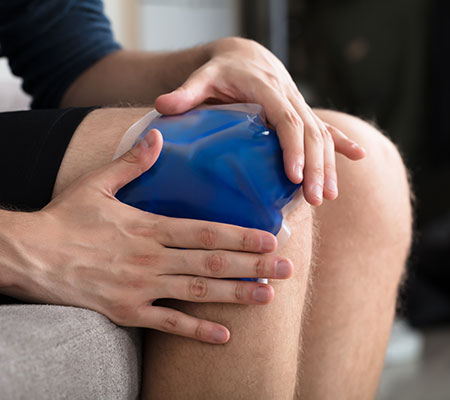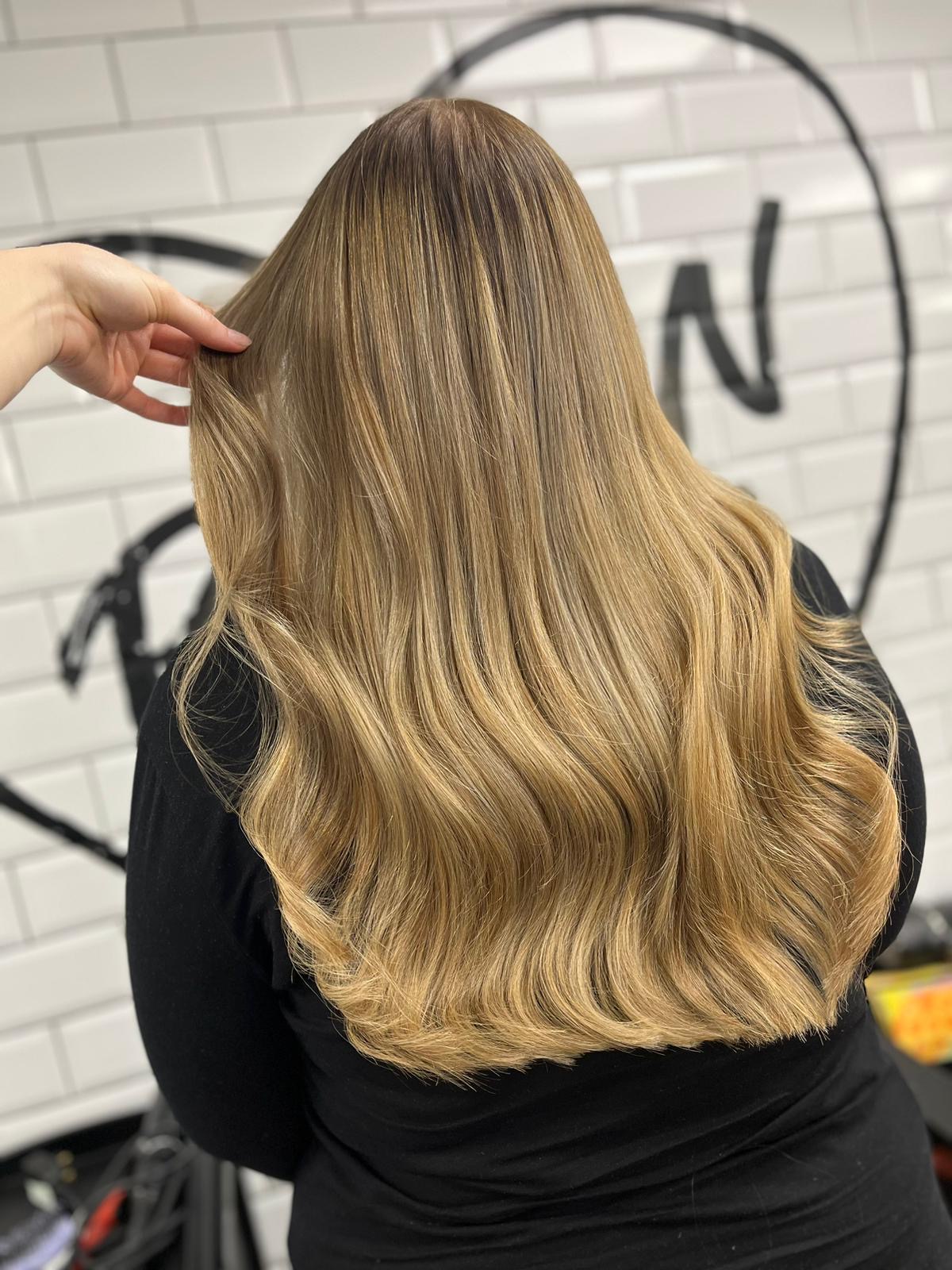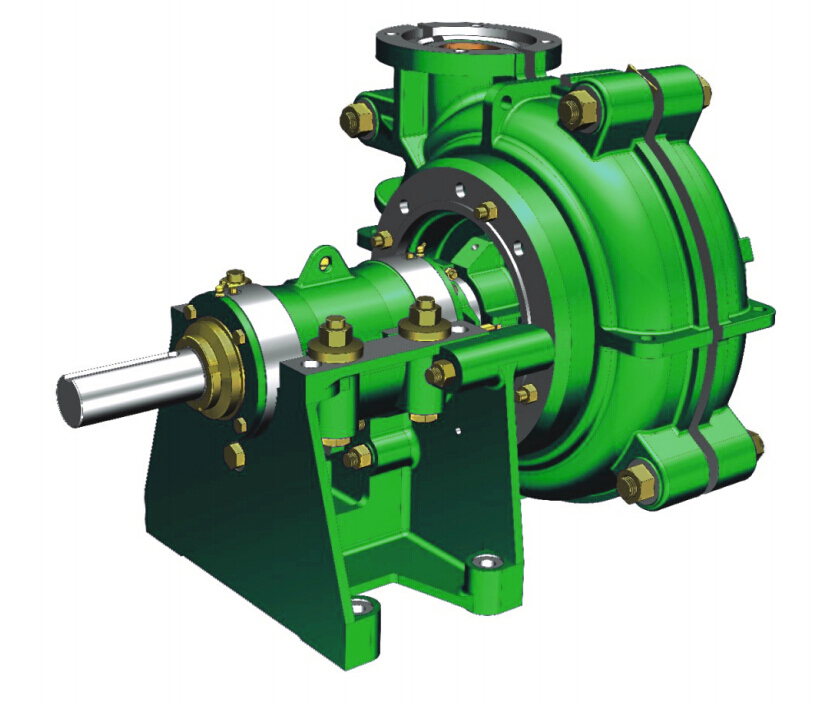
productsoftomorrow
Protect Your SkinUnveiling the Secrets of Herbal Remedies for Hair Loss Prevention
Tuesday , 23, April 2024 Business and Management Leave a comment
Image Source- Google
Are you tired of dealing with hair loss and looking for natural solutions to promote hair growth? Herbal remedies have been used for centuries to treat various ailments, including hair loss. In this article, we will unveil the secrets of herbal remedies that can help proven hair loss prevention treatment and promote healthy hair growth.
The Causes of Hair Loss
Hair loss can be caused by a variety of factors, including genetics, hormonal imbalances, stress, and nutritional deficiencies. Understanding the underlying cause of your hair loss can help you determine the best course of action to prevent further hair loss and promote hair growth.
Common Causes of Hair Loss:
- Genetics
- Hormonal imbalances
- Stress
- Nutritional deficiencies
Herbal Remedies for Hair Loss Prevention
1. Aloe Vera
Aloe vera is a popular herb known for its soothing and healing properties. It can help promote hair growth by strengthening the hair follicles and reducing scalp inflammation.
2. Rosemary
Rosemary is another herb that has been used for centuries to promote hair growth. It stimulates blood circulation to the scalp, which can help nourish the hair follicles and promote healthy hair growth.
3. Ginseng
Ginseng is a powerful herb that can help prevent hair loss by promoting hair follicle growth and reducing hair thinning. It also has anti-inflammatory properties that can help soothe the scalp and promote healthy hair growth.
How to Use Herbal Remedies for Hair Loss Prevention
1. Herbal Hair Masks
You can create hair masks using a combination of herbs such as aloe vera, rosemary, and ginseng to promote hair growth and prevent hair loss. Simply mix the herbs with a carrier oil such as coconut or olive oil and apply the mask to your scalp and hair. Leave it on for 30 minutes before rinsing it out with warm water.
2. Herbal Hair Rinse
You can also create a herbal hair rinse using herbs such as rosemary and sage to stimulate hair growth and prevent hair loss. Simply steep the herbs in hot water, let it cool, and use it as a final rinse after shampooing and conditioning your hair.
3. Herbal Supplements
In addition to using herbal remedies topically, you can also take herbal supplements such as ginseng capsules to promote hair growth from the inside out. Consult with a healthcare provider before taking any herbal supplements to ensure they are safe for you.
Tips for Using Herbal Remedies for Hair Loss Prevention
1. Be Consistent
- Consistency is key when using herbal remedies for hair loss prevention. Make sure to incorporate them into your hair care routine regularly to see results.
2. Patience is Key
- Herbal remedies may take time to show results, so be patient and give them time to work their magic on your hair.
3. Combine with a Healthy Lifestyle
- Eating a balanced diet, managing stress, and practicing good hair care habits are essential for promoting healthy hair growth in conjunction with herbal remedies.
Conclusion
Herbal remedies can be a natural and effective way to prevent hair loss and promote healthy hair growth. By incorporating herbs such as aloe vera, rosemary, and ginseng into your hair care routine, you can strengthen hair follicles, reduce inflammation, and nourish the scalp to support hair growth. Remember to be consistent, patient, and combine herbal remedies with a healthy lifestyle for optimal results.
The Science Behind Colored Glass Sheets: How Colors Influence Mood and Energy
Tuesday , 23, April 2024 Business and Management Leave a commentColored glass sheets have been used for centuries to create stunning visual effects in architecture and design. However, beyond their aesthetic appeal, these colored sheets have a powerful impact on our emotions and energy levels. The science behind how different colors influence our mood and energy is a fascinating subject that is gaining more attention in various fields, from interior design to psychology. Let's explore the psychological effects of different colored glass sheets and how they can be used to enhance our environment.
The Psychology of Color
Color psychology is the study of how different colors can affect human behavior and emotions. Our brains are wired to respond to colors in various ways, triggering specific emotional and physical responses. This is why color is such a powerful tool in design, marketing, and even therapy. When it comes to colored glass sheets, the choice of color can make a significant impact on the atmosphere of a space.
How Colors Influence Mood
- Red: Red is a color associated with energy, passion, and excitement. It can increase heart rate and create a sense of urgency. However, too much red can also evoke feelings of anger or aggression.
- Blue: Blue is a calming and soothing color that is often associated with tranquility and trust. It can lower blood pressure and promote a sense of relaxation. However, too much blue can evoke feelings of sadness or melancholy.
- Yellow: Yellow is a bright and cheerful color that is associated with happiness and optimism. It can increase energy levels and stimulate mental activity. However, too much yellow can lead to feelings of anxiety or frustration.
- Green: Green is a color associated with nature, balance, and harmony. It can create a sense of calm and rejuvenation. Green is also believed to have a healing effect on the body and mind.
- Purple: Purple is a color often associated with luxury, creativity, and spirituality. It can evoke feelings of mystery and imagination. Purple is also linked to wisdom and introspection.
- Orange: Orange is a color that combines the energy of red and the cheerfulness of yellow. It can create a sense of warmth and excitement. Orange is often used to stimulate creativity and enthusiasm.
How Colors Influence Energy Levels
Colors can not only influence our mood but also our energy levels. By choosing the right colors for a space, you can create an environment that promotes productivity, creativity, or relaxation.
- Warm Colors: Colors like red, orange, and yellow are considered warm colors that can increase energy levels and stimulate activity. They are perfect for spaces where energy and movement are desired, such as exercise rooms or creative studios.
- Cool Colors: Colors like blue, green, and purple are considered cool colors that can promote a sense of calm and relaxation. They are ideal for spaces where focus and concentration are needed, such as offices or meditation rooms.
- Neutral Colors: Colors like beige, gray, and white are neutral colors that can create a sense of balance and harmony. They are versatile and can be used in various spaces to create a calming and timeless atmosphere.
Applying Colored Glass Sheets in Design
Residential Spaces
Colored glass sheets can be used in residential spaces to create a unique and personalized environment. By choosing the right colors, you can enhance the mood and energy of each room in your home.
- Use blue glass sheets in the bedroom to promote relaxation and improve sleep quality.
- Install green glass sheets in the living room to create a sense of harmony and balance.
- Add red glass sheets in the kitchen to increase energy levels and stimulate appetite.
- Consider purple glass sheets in the home office to enhance creativity and focus.
Commercial Spaces
Colored glass sheets can also be used in commercial spaces to create a welcoming and productive environment for employees and customers.
- Use orange glass sheets in a restaurant to stimulate appetite and create a vibrant atmosphere.
- Install yellow glass sheets in a retail store to evoke feelings of happiness and optimism.
- Add green glass sheets in a spa to promote relaxation and rejuvenation.
Conclusion
Colored glass sheets are not just a decorative element but a powerful tool that can influence our mood and energy levels. By understanding the psychology of color and how different colors can affect us, we can use colored glass sheets to create environments that support our well-being and enhance our daily experiences. Whether in residential or commercial spaces, the choice of color is a crucial aspect of design that should not be overlooked.
From Land to Sea: Exploring the World of International Freight Shipping
Monday , 22, April 2024 Business and Management Leave a commentIn today's global economy, international freight shipping plays a vital role in the movement of goods across continents. From land transportation to sea freight, businesses rely on efficient logistics to ensure their products reach customers in a timely and cost-effective manner. Let's delve into the world of international freight shipping to understand the various modes of transportation, challenges, and key considerations involved in this complex process.
The Basics of International Freight Shipping
Land Transportation
- Trucks and railways are commonly used for the initial and final legs of international freight shipping
- Trucks provide flexibility for door-to-door deliveries, while railways offer a cost-effective option for long-distance transport
- Trucking companies often coordinate with ocean carriers for seamless transportation of goods between different modes
Sea Freight
- Sea freight is a popular choice for shipping goods internationally due to its cost-effectiveness for large volumes
- Container ships are the primary vessels used for transporting goods across oceans
- Shipping containers come in standard sizes such as 20-foot and 40-foot containers, making them easy to transfer between different modes of transportation
Challenges in International Freight Shipping
Customs and Regulations
- Each country has its own customs regulations and import/export requirements, making compliance a challenging aspect of international freight shipping
- Failure to adhere to customs regulations can result in delays, fines, or even seizure of goods
Supply Chain Disruptions
- Weather events, port strikes, and other unforeseen circumstances can disrupt the supply chain and impact the timely delivery of goods
- Effective communication and contingency planning are essential to mitigate the impact of supply chain disruptions
Key Considerations in International Freight Shipping
Transportation Costs
- Comparing transportation costs across different modes of shipping can help businesses choose the most cost-effective option
- Factors such as fuel prices, exchange rates, and route distance can influence transportation costs
Transit Times
- Understanding transit times for different modes of transportation is crucial for planning inventory levels and meeting customer expectations
- Air freight offers the fastest transit times but at a higher cost, while sea freight is slower but more economical for non-urgent shipments
Sustainability
- As environmental concerns grow, businesses are increasingly focused on reducing their carbon footprint in international freight shipping
- Choosing eco-friendly transportation options, optimizing routes, and minimizing packaging waste are ways to promote sustainability in logistics
Conclusion
International freight shipping involves a complex network of transportation modes, regulations, and challenges. From trucks and railways for land transportation to container ships for sea freight, businesses must navigate a myriad of factors to ensure the smooth flow of goods across borders. By understanding the basics of international freight shipping, addressing key challenges, and considering important factors such as transportation costs, transit times, and sustainability, businesses can optimize their logistics operations for global trade.
Exploring the Benefits of Upgrading to a Warman Slurry Pump
Monday , 22, April 2024 Business and Management Leave a commentSlurry pumps are essential equipment in industries such as mining, construction, and wastewater treatment. They are used to transport abrasive and corrosive slurries with high solid content. One of the most trusted names in the industry is Warman, known for its reliable and efficient slurry pumps. In this article, we will explore the benefits of upgrading Warman slurry pump and how it can improve the performance and reliability of your operations.
The Superior Technology of Warman Slurry Pumps
Warman slurry pumps are designed with advanced technology and engineering expertise to handle the toughest slurry applications. Here are some key features that set Warman slurry pumps apart:
1. Robust Construction
- Warman slurry pumps are built with high-quality materials that can withstand the most demanding operating conditions.
- They are designed for long-lasting performance, reducing downtime and maintenance costs.
2. Efficient Hydraulic Design
- The hydraulic design of Warman slurry pumps maximizes efficiency and minimizes energy consumption.
- They are able to handle high flow rates and maintain performance over time.
Benefits of Upgrading to a Warman Slurry Pump
1. Improved Performance
- Warman slurry pumps deliver superior performance compared to other pumps in the market.
- They are able to handle high-density slurries with ease, ensuring smooth operation.
2. Increased Reliability
- With their durable construction and reliable performance, Warman slurry pumps offer increased reliability.
- Minimize the risk of downtime and costly repairs with a Warman slurry pump.
3. Lower Operating Costs
- Warman slurry pumps are known for their energy efficiency, helping to reduce operating costs.
- Their robust design also reduces maintenance and replacement costs over time.
Applications of Warman Slurry Pumps
Warman slurry pumps are used in a wide range of industries and applications, including:
Mining
- Handling abrasive and corrosive slurries in mining operations.
- Transporting tailings and other mining by-products efficiently.
Construction
- Dewatering construction sites and handling construction slurry waste.
- Pumping concrete and other construction materials with high solid content.
Wastewater Treatment
- Processing and transferring sludge in wastewater treatment plants.
- Handling industrial wastewater with high solid content.
Conclusion
Upgrading to a Warman slurry pump can bring a range of benefits to your operations, including improved performance, increased reliability, and lower operating costs. With their superior technology and robust construction, Warman slurry pumps are a trusted choice for industries that rely on efficient slurry handling equipment. Consider upgrading to a Warman slurry pump to enhance the efficiency and productivity of your operations.
5 Crucial Tips for Choosing the Right Tow Company for Your Vehicle
Monday , 22, April 2024 Business and Management Leave a comment
Image Source: Google
When your vehicle breaks down on the side of the road, finding a reliable tow company is essential to ensure your vehicle is safely transported to a repair shop. With so many tow companies out there, it can be challenging to choose the right one. To help you make an informed decision, here are five crucial tips to consider when selecting the best tow company for your vehicle:
1. Check for Licensing and Insurance
Before hiring a tow company, it is important to verify that they are properly licensed and insured. This ensures that they meet the necessary requirements to operate legally and that your vehicle will be protected in case of any damage during the towing process.
Key points to consider:
- Ask for their license number and insurance information.
- Verify their credentials with the relevant authorities.
- Ensure their insurance coverage includes liability for any potential damage to your vehicle.
2. Consider Reputation and Experience
When choosing a tow company, it is crucial to consider their reputation and experience in the industry. A company with a good reputation is more likely to provide reliable service and take good care of your vehicle during the towing process.
Things to look out for:
- Read reviews and testimonials from previous customers.
- Check how long the company has been in business.
- Inquire about their experience in handling vehicles similar to yours.
3. Evaluate Response Time and Availability
In emergency situations, such as a vehicle breakdown, quick response time is crucial. When selecting a tow company, consider their availability and response time to ensure they can reach you promptly and provide the assistance you need.
Factors to consider:
- Ask about their average response time for emergencies.
- Inquire about their operating hours and availability on weekends or holidays.
- Ensure they have a fleet of tow trucks to accommodate your needs promptly.
4. Compare Pricing and Services
While cost should not be the only factor in selecting a tow company, it is essential to compare pricing and services offered by different companies. Be wary of companies that provide extremely low quotes, as they may compromise on service quality.
Things to inquire about:
- Request a detailed breakdown of their pricing structure.
- Inquire about any additional fees, such as hook-up charges or mileage fees.
- Compare the services offered, such as roadside assistance or vehicle storage.
5. Ask About Equipment and Training
The quality of equipment and level of training of the tow company's staff can impact the safety of your vehicle during transportation. It is important to ask about the type of equipment they use and the training their operators receive to handle different types of vehicles.
Key inquiries to make:
- Ask about the condition and capabilities of their tow trucks.
- Inquire about any specialized training their operators have received.
- Ensure they have the necessary tools to safely tow your specific type of vehicle.
By following these five crucial tips, you can make an informed decision when choosing a tow company for your vehicle. Remember that the safety and well-being of your vehicle are paramount, so take the time to research and select a reputable and reliable tow company that meets your needs.
Gear Up for Your Next Ride with Quality Equestrian Equipment
Sunday , 21, April 2024 Business and Management Leave a comment
Whether you are a seasoned equestrian or just starting out, having the right gear and equipment is essential for a successful and enjoyable ride. From saddles and bridles to protective gear for both horse and rider, investing in quality equestrian equipment can make a significant difference in your riding experience. You can hop over this website if you're looking for the best equestrian equipment. Here are some tips on how to gear up for your next ride with the best equestrian equipment available:
The Importance of Quality Equestrian Equipment
Quality equestrian equipment not only ensures the safety and comfort of both horse and rider but also enhances performance and overall riding experience. Investing in high-quality gear can make a significant difference in your riding sessions, whether you are training, competing, or simply enjoying a leisurely ride.
Essential Equestrian Equipment
- Saddle: A well-fitted saddle is crucial for both the comfort and performance of the horse. There are various types of saddles available, including dressage, jumping, and trail saddles, so choose one that suits your riding style.
- Bridle: A bridle is essential for communicating with your horse and guiding them during the ride. Make sure the bridle fits properly and provides clear signals to your horse.
- Riding Helmet: Safety should always come first when riding, so invest in a certified riding helmet that fits you properly and provides adequate protection in case of a fall.
- Riding Boots: Proper riding boots not only keep your feet comfortable during long rides but also provide the necessary grip and support while in the saddle.
- Riding Breeches: Riding breeches are designed to provide comfort and flexibility while riding. Look for breeches made of durable and breathable materials for maximum comfort.
Choosing the Right Equestrian Equipment
With so many options available in the market, choosing the right equestrian equipment can be overwhelming. Here are some factors to consider when selecting gear for you and your horse:
Fit and Comfort
- Ensure that the equipment fits both you and your horse comfortably to prevent any discomfort or injuries during the ride.
- Try out different brands and styles to find the best fit for your body type and riding preferences.
Material and Durability
- Look for equestrian equipment made of high-quality materials that are durable and long-lasting.
- Check for any signs of wear and tear regularly and replace any equipment that shows signs of damage.
Style and Functionality
- Choose gear that not only serves its purpose but also reflects your personal style and preferences.
- Consider the functionality of the equipment and how it can enhance your performance and riding experience.
Maintaining Your Equestrian Equipment
Proper maintenance of your equestrian equipment is essential to ensure its longevity and performance. Here are some tips on how to care for your gear:
Cleaning and Storage
- Regularly clean and condition leather equipment to prevent drying and cracking.
- Store your gear in a clean and dry environment to prevent mold and mildew growth.
Inspecting for Wear and Tear
- Check your equipment regularly for any signs of wear and tear, such as loose stitches or broken buckles.
- Replace or repair any damaged gear to ensure safety and functionality.
Professional Maintenance
- Consider having your saddles and other leather equipment professionally inspected and maintained to ensure their longevity.
- Consult with a professional equestrian equipment specialist for any repairs or adjustments needed.
Conclusion
Investing in quality equestrian equipment is essential for a safe, comfortable, and enjoyable riding experience. Whether you are a beginner or a seasoned rider, having the right gear can make a significant difference in your performance and overall satisfaction. By choosing the right equipment, properly maintaining it, and prioritizing safety, you can gear up for your next ride with confidence and style.
Revolutionizing Insurance: How RPA is transforming the industry
Saturday , 20, April 2024 Business and Management Leave a commentIn today's fast-paced world, technology is at the forefront of transforming various industries, and the insurance sector is no exception. Robotic Process Automation (RPA) is one such technology that is revolutionizing the insurance industry by streamlining processes, reducing costs, and enhancing customer satisfaction. Let's delve into how RPA is reshaping the insurance landscape.
The Role of RPA in Insurance
Increased Efficiency
- RPA automates repetitive, rule-based tasks such as data entry, processing claims, and generating policy documents, allowing employees to focus on more strategic and complex activities.
- By eliminating manual errors and reducing processing times, RPA enhances operational efficiency and productivity within insurance organizations.
Cost Savings
- Implementing RPA leads to significant cost reductions by reducing the need for human intervention in routine tasks and decreasing error rates, thus saving time and resources.
- By automating processes, insurance companies can lower operational costs, improve overall profitability, and remain competitive in the market.
Enhanced Customer Experience
- RPA enables faster response times to customer queries, quicker claims processing, and personalized services, ultimately enhancing the overall customer experience.
- By providing 24/7 customer support and streamlining processes, RPA helps insurance companies meet customer demands and expectations more efficiently.
Benefits of RPA in Insurance
Streamlined Claims Processing
- RPA automates the end-to-end claims process, from initial claim intake to final settlement, reducing processing times and improving accuracy.
- By extracting relevant data, validating claims, and updating information in real-time, RPA enhances the efficiency of claims processing and accelerates claim settlements.
Improved Compliance and Risk Management
- RPA ensures adherence to regulatory requirements by standardizing processes, maintaining accurate records, and reducing the risk of compliance violations.
- By consistently applying rules and regulations, RPA helps insurance companies mitigate risks, avoid penalties, and enhance overall compliance management.
Enhanced Data Management
- RPA facilitates seamless data integration across multiple systems, ensuring data accuracy, consistency, and security within insurance operations.
- By automating data entry, validation, and reconciliation processes, RPA minimizes errors, improves data quality, and enables better decision-making based on reliable data.
Challenges and Considerations
Integration with Legacy Systems
- Integrating RPA with existing legacy systems and IT infrastructure can be complex and require thorough planning and coordination to ensure compatibility and optimal performance.
- Insurance companies need to assess their current systems, evaluate integration options, and implement RPA solutions that seamlessly work with their legacy infrastructure.
Employee Adoption and Training
- Employee resistance to change and lack of proper training are common challenges faced during the implementation of RPA in insurance organizations.
- Effective change management strategies, training programs, and clear communication are essential to ensure employee buy-in, engagement, and successful adoption of RPA technology.
Data Security and Privacy Concerns
- With the automation of processes and the handling of sensitive customer data, ensuring data security, privacy, and compliance with regulations becomes a critical consideration for insurance companies implementing RPA.
- Implementing robust security measures, encryption protocols, access controls, and regular audits are necessary to safeguard data and prevent potential cyber threats and breaches.
Future Outlook
As technology continues to advance, the adoption of RPA in the insurance industry is poised to grow rapidly, offering immense opportunities for innovation, transformation, and competitive advantage. By leveraging RPA capabilities, insurance companies can drive operational excellence, improve customer service, and achieve sustainable growth in a dynamic and evolving marketplace.
Top 5 Benefits of Using an Ice Pack for Knee Injuries
Friday , 19, April 2024 Marketing and Advertising Leave a comment
Image Source: Google
When it comes to managing knee injuries, ice therapy is a popular and effective treatment option. Ice packs can help reduce pain, inflammation, and swelling in the injured area. In this article, we will explore the top 5 benefits of using an ice pack for knee injuries and why it should be a part of your recovery routine.
1. Pain Relief
One of the most significant benefits of using an ice pack for knee injuries is pain relief. The cold temperature of the ice helps numb the area, reducing the sensation of pain. It can be especially helpful in the first 48 hours after an injury when pain and swelling are most intense. To get more information about ice pack for knee, you may browse this website.
Applying an ice pack can also help decrease the need for pain medication, which is beneficial for those looking to manage their pain without relying solely on drugs.
How it works:
- Ice constricts blood vessels, reducing blood flow to the injured area and decreasing inflammation.
- Less inflammation means less pressure on the surrounding tissues and nerves, leading to less pain.
- The numbing effect of the cold can provide immediate relief from acute pain.
2. Reduction of Swelling
Swelling is a common symptom of knee injuries, such as strains, sprains, or tendonitis. Ice therapy is an effective way to reduce swelling as the cold temperature constricts blood vessels and limits the amount of fluid that can build up in the injured area. By reducing swelling, you can improve your range of motion and decrease stiffness in the knee joint.
How it works:
- The application of ice causes vasoconstriction, which narrows the blood vessels and reduces the flow of fluid into the tissues.
- Reducing swelling helps alleviate pressure on the nerves, which can further decrease pain levels.
- Ice therapy can also prevent excessive swelling, which may prolong the healing process.
3. Accelerated Healing
Using an ice pack for knee injuries can help speed up the healing process by promoting faster tissue repair. Cold therapy is known to constrict blood vessels and slow down cellular metabolism, which can reduce the risk of tissue damage and facilitate the body's natural healing mechanisms. By applying ice regularly to the injured knee, you can encourage faster recovery and get back to your normal activities sooner.
How it works:
- Cold therapy can minimize the extent of tissue damage by decreasing metabolic rate and oxygen demand in the cells.
- Improved circulation after the removal of the ice pack can bring in fresh nutrients and oxygen to the injured area, supporting healing.
- Reducing inflammation through ice therapy can create a more optimal environment for the body to repair damaged tissues.
4. Improved Mobility
Restricted movement is a common issue with knee injuries due to pain, swelling, and stiffness. Ice therapy can help improve mobility by reducing pain and inflammation, allowing you to move the knee more comfortably. By incorporating ice packs into your recovery routine, you can work on restoring flexibility and range of motion in the knee joint, which is essential for a full recovery.
How it works:
- Ice therapy can help relax muscle spasms and decrease pain, making it easier to engage in physical therapy exercises for improved mobility.
- Reducing swelling can prevent stiffness in the knee joint and promote better movement.
- Regular use of ice packs can aid in maintaining joint function and preventing long-term mobility issues.
5. Cost-Effective and Convenient
Using an ice pack for knee injuries is a cost-effective and convenient treatment option that can be easily incorporated into your daily routine. Ice packs are readily available at drugstores and can be used multiple times, making them a budget-friendly choice for managing knee pain and swelling. Additionally, you can apply ice therapy at home, work, or even on the go, allowing you to take care of your injury wherever you are.
How it works:
- Ice packs are reusable and require no additional costs once purchased, unlike certain medications or treatments.
- Ice therapy can be self-administered at any time, providing immediate relief when needed without the need for a healthcare professional.
- The convenience of ice packs makes it a practical option for incorporating into your daily routine for consistent treatment.
Overall, using an ice pack for knee injuries offers a wide range of benefits, from pain relief and reduced swelling to accelerated healing and improved mobility. By incorporating ice therapy into your recovery plan, you can effectively manage your injury and promote a faster and more comfortable rehabilitation process.
From Classic Cuts to Trendy Styles: Dublin’s Best Hair Salons Unveiled
Friday , 19, April 2024 Marketing and Advertising Leave a comment
Dublin is a city known for its vibrant culture and trendy fashion scene. When it comes to hair salons, Dublin offers a plethora of options for those looking to update their hairstyle or maintain their classic look. From classic cuts to trendy styles, Dublin's best hair salons cater to a diverse clientele, ensuring that everyone finds the perfect salon for their hair needs.
Classic Cuts
1. The Grafton Barber
- Offers traditional barber services
- Specializes in classic men's haircuts
- Experienced barbers with attention to detail
2. Brown Sugar
- Renowned for its high-quality haircuts
- Provides classic styling and coloring services
- Luxurious salon experience
3. House of Colour
- Experts in color services
- Offers traditional cuts with a modern twist
- Emphasis on personalized consultations
Trendy Styles
1. Peter Mark
- Leading the way in hair trends
- Skilled stylists for fashion-forward looks
- Offers a wide range of styling services
2. Davey Davey
- Known for creative and trendy hairstyles
- Specializes in modern cuts and color techniques
- Unique and edgy salon environment
3. Zeba Hairdressing
- Celebrity-favorite salon for trendy styles
- Expertise in cutting-edge hair treatments
- Offers runway-inspired looks
Additional Services
1. Blow Salons
- Specializes in blow-dry services
- Offers express styling for all hair types
- Convenient locations throughout Dublin
2. Sugar Cubed
- Unique salon concept with innovative services
- Provides hair extensions and creative styling options
- Youthful and energetic salon atmosphere
3. Dylan Bradshaw
- Full-service salon with a range of hair treatments
- Experienced stylists for personalized hair care
- Luxurious spa services available
Conclusion
Whether you are seeking a classic haircut or a trendy style, Dublin's best hair salons have something for everyone. With experienced stylists, innovative techniques, and a wide range of services, these salons are sure to cater to all your hair needs. Visit one of these top hair salons in Dublin and treat yourself to a fabulous new look!
From Fitness Goals to Meal Planning: How a Nutrition Tracker Can Transform Your Health
Thursday , 18, April 2024 Marketing and Advertising Leave a commentMaintaining a healthy lifestyle involves a combination of regular exercise and proper nutrition. While setting fitness goals and sticking to a workout routine are essential components of a healthy lifestyle, paying attention to what you eat is equally important. Meal planning and tracking your nutrition intake can play a significant role in achieving optimal health and fitness outcomes. In this article, we will explore how the best nutrition tracker can help transform your health by providing insights into your dietary habits and assisting you in making informed choices to reach your wellness goals.
The Importance of Nutrition in Achieving Fitness Goals
Nutrition is a crucial aspect of health and fitness. The foods you consume provide the energy and nutrients needed to fuel your workouts, aid in muscle recovery, and support overall well-being. By paying attention to your diet and ensuring you are consuming a balanced and nutritious mix of foods, you can maximize the benefits of your fitness routine and enhance your performance. Here are some key reasons why nutrition is essential in achieving your fitness goals:
Key reasons why nutrition is crucial in achieving fitness goals:
- Provides energy for workouts
- Aids in muscle recovery and repair
- Supports overall health and well-being
- Helps in achieving and maintaining a healthy weight
- Improves performance and endurance
The Role of a Nutrition Tracker in Transforming Your Health
A nutrition tracker is a valuable tool that can help you monitor your food intake, track your macros, and stay accountable to your dietary goals. By logging your meals and snacks, you can gain valuable insights into your eating patterns, identify areas for improvement, and make informed choices to optimize your nutrition. Here are some ways a nutrition tracker can transform your health:
Ways a nutrition tracker can help improve your health:
- Provides visibility into your caloric intake
- Tracks macronutrients such as protein, carbohydrates, and fats
- Monitors micronutrient intake to prevent deficiencies
- Helps identify food sensitivities or allergies
- Encourages mindful eating habits
Tips for Using a Nutrition Tracker Effectively
While a nutrition tracker can be a powerful tool in transforming your health, it is important to use it effectively to derive maximum benefits. Here are some tips for making the most of your nutrition tracking experience:
Effective tips for using a nutrition tracker:
- Set specific and achievable goals for your nutrition
- Consistently log your meals and snacks throughout the day
- Use portion sizes or weighing scales to accurately measure your food intake
- Regularly review your tracking data to identify patterns and opportunities for improvement
- Seek guidance from a nutritionist or dietitian to interpret your tracker data and make informed adjustments to your diet
Benefits of Integrating Fitness Goals with Meal Planning
Integrating your fitness goals with meal planning can enhance the effectiveness of your health and wellness journey. By aligning your nutrition with your physical activity levels and objectives, you can optimize your energy levels, promote muscle growth and recovery, and achieve a healthy balance in your diet. Here are some benefits of integrating fitness goals with meal planning:
Benefits of aligning fitness goals with meal planning:
- Ensures adequate fueling for workouts and activities
- Promotes muscle repair and growth
- Supports weight management and body composition goals
- Improves overall nutrient intake and balance
- Enhances performance and recovery
Conclusion
Transforming your health and achieving your fitness goals requires a holistic approach that encompasses both exercise and nutrition. By utilizing a nutrition tracker to monitor your food intake, track your macros, and align your meals with your fitness objectives, you can make significant strides towards optimal health and well-being. Remember, consistency and mindfulness are key when it comes to nutrition tracking, so make it a habit to log your meals and snacks regularly. With the right tools and strategies in place, you can take control of your dietary habits and pave the way for a healthier, fitter you.



